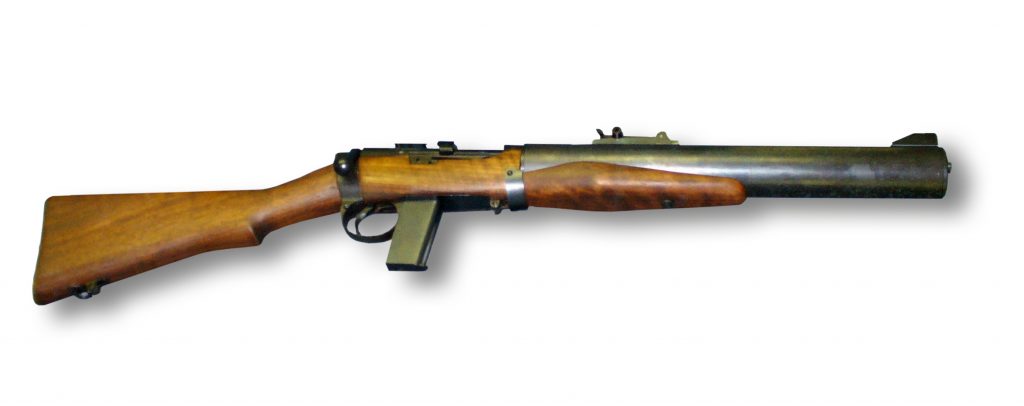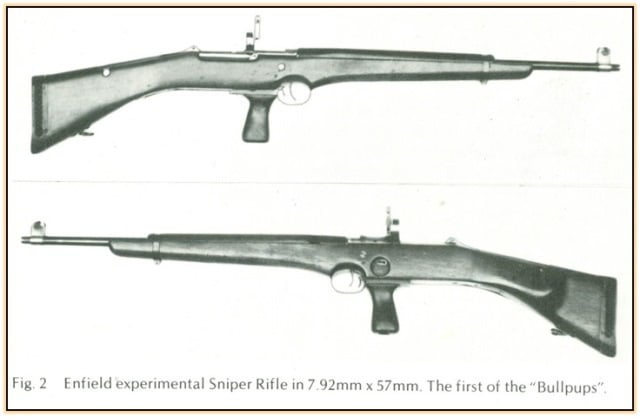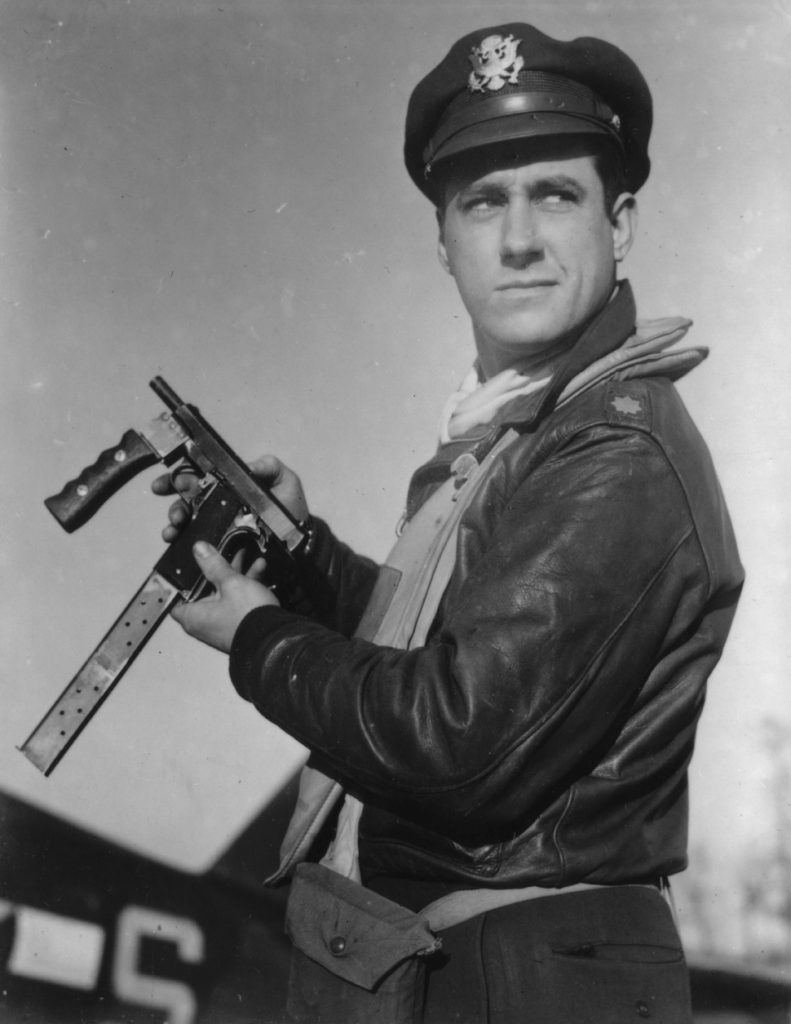World War 2 was global, massive, and downright incredible. The world had never and has since never seen such warfare. We saw the rapid evolution of warfare, technology, and of course, firearms! This led to the world’s first assault rifle, revolutionary SMGs, and a better understanding of squad support weapons. With that said, along the way, there were some very weird weapons deployed and developed.
The demand for weapons on the front streamlined some prototypes and trials in order to get guns into the hands of shooters. Some guns weren’t quite up to snuff, like the Reising SMGs. Others, like the Hyde M2, were great but took too long to produce, so guns like the M3 saw service. With that said, plenty of these weird guns worked well, but they never had a chance of sticking around.
I’m a huge weird gun fan, so when a weird weapon comes across my feed, I have this incredible ability to remember it forever. If I could do that for something useful, that would be great. Since I can’t, I figure I might as well share some World War 2 oddities with our dutiful audience.
The Krummlauf STG 44
The STG 44 was arguably the first assault rifle. It was a selective-fire rifle that fired an oddball intermediate cartridge and was good within 300 yards. It packed more punch than an SMG but was much smaller, lighter, and faster firing than the battle rifles of the era. The STG 44 was truly a revolution. The Krummlauf was an attempt to provide infantry and armored crews with a specialized version of the gun.

The Krummlauf variant looks like something a kindergartener would design. The barrel is hilariously bent. The idea was to provide a barrel that could fire around corners, walls, and cover. The infantry version even had a periscope light sighting system. There were two models, one with a 30° bend and one with a 45° bend. These silly barrels never worked, wore out quickly, and destroyed bullets in the barrel.
It was nutty, but both the Americans and Soviets tried to do the same thing with their SMGs.
M1941 Johnson LMG
Melvin Johnson was a skilled weapon designer who produced two famous weapons used by the United States Marine Corps, the Johnson Rifle and the Johnson Light Machine Gun. The Johnson Light Machine Gun was an odd squad support rifle. It was used by the Marines, but also by the 1st Special Service Force. It was lighter and shorter than the BAR, which seems great, and by accounts, it was.

However, it was odd in its design. It used a short recoil operation and fed from a side-mounted magazine. It was really more of an automatic rifle than an LMG, but that’s splitting hairs. Another odd feature is that it was select fire, and when fired in semi-auto, it could fire from a closed bolt. In full auto, it fired from an open bolt. The fire rate could even be altered to vary from 300 to 900 rounds per minute. It was odd-looking and odd-functioning, but fairly effective.
FG-42
The FG-42 was in no way influenced by the Johnson light machine gun, but it had a large number of similarities. The FG-42 also fed from a side-loading magazine and utilized a full-powered rifle round, the 8mm Mauser, to be specific. The FG-42 used a selective fire design that also fired semi-auto in the closed bolt mode and switched to open bolt in the full auto position.

The FG-42 was not designed to be a squad support weapon. It was a paratrooper’s rifle that would act as a battle rifle with some support fire capabilities. It was quite odd and is an early example of optics use amongst general fighting forces. The FG-42 was produced in decent numbers but was limited to paratrooper forces.
Model 2 Submachine Gun
In World War 2, the Japanese had some of the most underwhelming small arms in the world. They just couldn’t really pull it together. The Japanese Model 2 SMG was an improvement of the, you guessed it, Model 1 SMG.

I will give the Japanese credit for conquering the looks department. This SMG looks like it came out of a retro-futuristic video game. The combination of wood and metal is always cool, but here it’s represented as some kind of weird attempt at making an SMG California legal. It lacks a pistol grip and has this oddball-looking combination pistol grip and rifle stock made from wood.
The receiver extends slightly above the stock and takes a tubular design. The barrel is quite short, which makes it quite maneuverable. Another weird feature was the pneumatic buffer device which could be rotated and acted as a bolt delay. This could change the firing rate between 500 to 600 rounds a minute.
De Lisle Carbine
Let’s say you need a gun that can kill Nazis very quietly. Yes, suppressed handguns exist, but handguns are tough to shoot. Rifles are not, but they don’t suppress as well as handguns. So make a rifle in a handgun caliber! Make it a bolt action rifle that’s integrally suppressed and have it fire the naturally subsonic .45 ACP. Perfect!

That’s the De Lisle Carbine. This rifle was short, super quiet, and perfect for zapping Nazis before they could think about their fraulein back home. British inventor Godfray De Lisle designed and built the original models. The gun was used by British Commandos throughout the war and was reportedly effective. The short design that’s paired with a rifle stock makes it easy to shoot accurately and score those killer hits. Why no one is making modern De Lisle carbines is beyond me.
Sedgley Fist Gun
A fist made of guns sounds awesome, better than a gun made of fists, for sure. The Sedgley Fist Gun was designed by Stanley Haight and manufactured by Sedgley Co. The Fist Gun was a single shot, break action, smoothbore, .38 Special pistol attached to a workman’s glove. The firing mechanism stuck forward, and when needed, the man wearing the glove would punch the bad guy, causing the gun to fire.

I love the idea of this weird weapon. The purpose is rather ingenious as well. The idea was that Sailors tasked with clearing brush could always be armed. The Japanese didn’t surrender often. Soldiers clearing brush and debris may run into a holdout and not have a regular weapon handy. So they punched them, with a gun. Although only about 200 were ever produced, and one found its way into “Inglourious Basterds.”
Nambu 6.5mm Type 11
Back to poorly made Japanese Automatic Weapons. The Type 11 Light Machine Gun is a total mess. It entered service in 1922 and thankfully left service in 1945. First, examine the aesthetics, including the weird amalgamation of stock and pistol grip. It’s tough to see, but the stock also bent to the right to compensate for the feed mechanism and ammunition. It clearly took something from the Model 2 or vice versa. The weapon featured a huge bipod and a fully finned barrel.

One of the weirdest features is the fact the gun used a hopper, much like a modern paintball gun. The hopper held six of the 5-round rifle clips used to load the Type 38. The crew could replace the stripper clips without having to remove the hopper or quit firing the weapon. Much like a belt, the weapon could be fed endlessly — in theory. Unfortunately, doing so often got the gunner killed and couldn’t be done during the assault. The hopper also made it easy to attract dirt and debris into the action.
Oh, and it couldn’t use the standard 6.5x50mm Arisaka ammo. It had to use a specialized, underpowered version of the same ammo.
SREM-1
The Czechs weren’t happy when the Nazis invaded their country and fought them like demons. Several refugees made it to the UK, and Czech arms designers went to work with the British to develop weapons. One weapon designed by the Czech small arms design team was the SREM-1 — a sniper rifle developed to address complaints from British snipers in the field. These complaints included the fact that activating the bolt was apparently giving away their position, and it was a bit long.

The SREM was bullpupish, and it trimmed some length from the original Enfield design. The SREM-1 used an odd pump-action design that was actually the grip. After firing the weapon, the gun’s second trigger released the pistol grip, which allowed you to pump the weapon and feed the next round for firing. It’s oddly shaped, and left-handers hate it.
Full Auto M1911
Finally, this gun was never issued or approved for use, but that didn’t stop the engineering Army Air Corps, Major David Schilling. He was an Ace P-47 pilot. I saw this photo of him with this gun in a museum and was confused. Where did a pilot get a full auto, compensated, extended magazine 1911 with a forward grip? As it turns out, he made it.

Major Schilling was reportedly always up to tinkering and eventually came up with this monstrosity that fired at an extreme rate of fire and would burn out barrels. I like to hope that he carried the gun in case he was shot down. It’s odd but so freaking cool.
The Weird Guns of World War 2
I’m barely scratching the surface. I didn’t address the Norm gun, the Welgun, the Welrod, or other oddballs that might have deserved a palace on this list. Hell, there were about a dozen different entries into the light rifle contest that could have made the list. Which ones should I have added? Let me know below!

